Fällkniven F1x Elmax | Review by Padraig Croke
When the X-series by Fällkniven was first released in 2019 I had the pleasure of getting a review together for the S1Xb — the size up from the F1X model we’re looking at today — complete with an impressive tungsten carbide coating, and to this day I can attest to my conclusion at the time that it’s one of the greatest outdoor knives ever made. At least of any that I’ve owned. And so I was extremely curious to try their smaller model in the F1X, but it didn’t make sense to review it back in ‘19, considering the only real difference was its size. However, with Fällkniven upgrading their choice of steel from CoS to Elmax, I couldn't resist.
Contents
A bit of background
The F1X is the little brother to a range of knives by Fällkniven that come in 3 different sizes, so called the F1, S1 and A1. The original Fällkniven model F1 has been the official survival knife for pilots in the Swedish Air Force since 1995 giving it the apt name of The Pilots Knife. Most military aviation units issue some kind of survival knife to their pilots in case their aircraft are shot down behind enemy lines and the crew needs tools to facilitate their survival, escape, and rescue. Despite being in service for almost 30 years, the F1 has gone through a number of iterations, with changes and improvements made to the edge geometry, steel choices, handle shape and materials, and sheath styles. It seems they are still making improvements to this unassuming little powerhouse.
First impressions
I loved the feel of the S1X when I first got it. The weight and chunk of the steel, the tactile and grippy scales, and the slim-ish handle, perfect for using the knife in gloved hands, as it’s designed to be used. The F1X is the same… the same but different. The shorter blade length gives it a beautiful balance in the hand actually, perhaps even more so than I felt with the S. That shorter blade allows me a lot more control and finesse, making the F1X a little more suited to bushcraft uses and nimble knifework. Added to this, the pinpoint swedge construction on the back of the blade allows for really precise work. It allows me to see where my knife's point is going exactly, and less friction reduces the knife's drag and prevents it from getting stuck in things like cans (we’ll get into that later).
As I’ve come to expect with Fällkniven, their convex geometry is really nice. I always find that I get on well with Fällkniven edges and the F1X is no different. I will discuss the steel choice a little later, but in short, the new Elmax choice here is a pleasant surprise. I had another knife in Elmax a few years ago, and I was sorry I sold it. So it was nice to get my hands on some more of this great steel.
The Zytel sheath, as with all the X models, is super solid, and probably one of my favourite things about these knives. Zytel, a glass reinforced polymer material, is resistant to almost all chemicals, as well as impacts, heat and pretty much anything it might encounter in the woods. The slim and discreet shape would make you almost forget you were even carrying your knife on your hip sometimes, and on more than one occasion I had a “glasses on my head” moment, trying to find my knife in camp, only to remember that it was actually on my belt! The locking mechanism is also a really nice element of these sheaths. It’s a secure lock, and yet it releases effortlessly when it’s called upon. It should be noted that the second lock isn't even entirely necessary, as your knife sits very snug anyway, but it’s definitely a nice addition, and I can imagine it would be a comfort, especially if I was carrying my knife on a chest harness or backpack for example.
Indestructible claims and fair usage limitations
The X-series was also the first set of knives from Fällkniven to be a full tang construction, which was something the company hadn’t been concerned about up until this point. I am speculating here, but I would imagine this is due to the fact that bushcraft practitioners started using Fällkniven blades. Before this, their customer base were probably hunters, fishermen, and the Swedish armed forces, none of whom were probably too concerned with having a full tang blade.
But Fällkniven didn’t just see this demand as a box ticking exercise it seems — bulking out their existing models to accommodate a full tang. No, they went the whole nine yards, taking this new blade construction seriously and conducting independent lab testing for break points and weaknesses in the steel. It seemed like they wanted to be able to claim with absolute certainty that they had designed the toughest blades they had ever made, capable of tackling anything you could throw at them. Also it should be stated, that in the break tests the knives do break! Allowing the company to go back to the drawing board and see if they can build a stronger knife.
YouTube can be a weird place at times, and I have found videos of people in full camo gear and gasmasks managing to break their A1 model. Granted, some of these videos are 20 minutes long and include activities such as: continuously stabbing their blade through the roof of an old car, pulverising a deer antler to dust and hammering the knife off a piece of sandstone before it eventually snaps. From what I can gather, the main fault is the separation of the layers in the laminate steel. It’s worth noting that Fällkniven knows the potential shortcomings of laminate steel, as their Pro version is made in Elmax, which they claim is 20% stronger than laminate.
When a knife company claims; “Your X-knife is the strongest, sharpest and safest stainless steel knife in production. If your life is in danger, you can always rely on your X-knife. It is designed to withstand all the stresses applied by the human hand, making it virtually indestructible” then it should be put to the test. However they also prerequisite this by stating; “it assumes, however, that you are careful with the knife and that it is used as intended, namely as a sharp precision tool.”
In my opinion, this is neither here, nor there. Either it’s indestructible, or it’s perfectly capable of dealing with the normal expected uses of a knife. Either one is good news for you, however this is an age old debate, especially when it comes to knives which claim to be survival blades. But I guess you have to decide yourself, as a user of good quality cutting tools, if a knife's ability to be simply outstanding is enough for you, or does it have to be completely indestructible as well. Especially if you found yourself in your last survival situation having to smash rocks with your knife repeatedly…hmm. Maybe you were building a house with it?
Introducing Elmax
Elmax is an awesome choice for any survival blade in my opinion. As I mentioned earlier, I owned a little trapper in Elmax a few years ago and I really enjoyed the properties of it. Comparable to S30V, Elmax will almost give you the best of both worlds with stainless and carbon choices. It is a powder metallurgy stainless steel created by Bohler-Uddenholm in Sweden. It is extremely corrosive resistant due to its high Chromium percentage and it has excellent edge holding capabilities. However, due to its high carbon content, it gains all the advantages of carbon steels, such as the ability to catch a spark with a piece of flint, and its toughness. Elmax is also quite easy to maintain, and with a piece of wet and dry sandpaper, with an old mouse mat under it, I was able to get this blade hair popping. This steel however, is not cheap, and it definitely explains the price tag of this F1X. But if you’re looking for a reliable steel, then Elmax is going to be an excellent choice, for those picky users that want the best specs in their hand.
Brass Tacks in survival situations
A survival knife doesn't have to be a huge hunk of steel to be useful. If it did, the F1 would not have lasted long in the hands of the Swedish military would it? And let’s be honest… statistically speaking, most of us are never going to find ourselves in a survival situation. If you were somehow unlucky enough to be in one, then I bet your Fällkniven would be up to whatever you required of it. Let’s first have a think about what the average person might need to concern themselves with, should they ever find themselves in such a situation. As a civilian, survival situations often occur when someone has found themselves out of their depth in the wild, requiring immediate help or rescue. Maybe they have fallen and broken a leg, or perhaps they have gotten lost or turned around. Maybe the weather has turned and they are losing body heat in cold conditions, or they are dehydrated and need shelter from the sun. Apart from immediately dealing with any sort of breathing, breaks or bleeding situations, the priorities will be different in every situation. These priorities are not in any order.
- Deal first with any life threatening injuries such as heavy blood loss, inability to breathe or securing a broken limb. After that, the following will be important to the survivor.
- Signalling rescue or calling for help to get out of the situation as quickly as humanly possible. All leave no trace rules go out the window when lives are genuinely at stake. Do anything you can think of to get yourself out of there
- Maintaining core body temperature to prevent heat stroke or hypothermia
- Staying hydrated and fed
- Keeping sheltered and dry
The reason I’m going into these in detail is to ask the real questions. I believe that we should rethink our ideas of “survival” situations. Most of us are not military personnel or in any sort of post-apocalyptic scenario. Most likely it’s going to be stupidly simple and avoidable situations we find ourselves in, where smart thinking and our brains are going to be our biggest asset. In any of these tasks, for however long they need to be executed, how can our knife aid us? Any sharp, reliable knife is an extremely valuable tool in this situation, and most likely would not require any extreme expectations on the knife itself if you had a bit of training. So let's look at some typical tasks the F1 would perform here, and we will quickly see that a survival knife does not necessarily mean a big knife.
Survival tasks with the F1X
Making fire is one of the key goals to tackle a lot of the above problems. Purifying safe drinking water, keeping warm and dry, morale and light and signalling for help can all be aided with a reliable fire. But in order to make our fire we need a few things…
Wood processing is probably one of the main tasks your knife will ever perform for you. We typically will take larger logs and break them down into small constituents, especially if it has been raining and our fire materials are wet. Often the wood inside is dry, and if we are using resinous woods like pine, then the wood is going to burn hot and fast once we get it going, allowing us to dry out any other wood we have available to us. The F1x blade is a great length for batoning wood, allowing for a significant piece to be processed with enough of the blade exposed to hit.
As well as this, the beautiful convex edge is perfect for the task, splitting wood with very little effort, regardless of what I put under it. The convex edge will also work better when it comes to cross grain work, acting much like an axe blade dealing with the layers within the wood. A convex edge is tough, much tougher than a scandi edge. But it also requires a little bit of practice too. If a scandi edge is like a guitar fretboard, then a convex is a violin. With no clear markings, using a convex is more about feel, finding the edge and that perfect roll. When you get used to it, it’s a dream. Everything from making fine curls on a featherstick, to blasting a log in half, a well designed convex edge will see you well I’m sure.
Wood processing ability 9/10
As we know, a good sharp spine on a blade will enable us to strike a firesteel. Furthermore, if it’s made from a high carbon steel, then it can also create a spark by striking a piece of flint or iron pyrite off the back, much like a flint and steel kit. However, even though Elmax is considered a stainless steel due to its high chromium content, it actually has quite a high amount of carbon in it. 1.7%, which is much more than most lower end stainless steels and is moving well into carbon steel territory. Because of this, I had some relative success with catching a spark off the spine with a piece of flint, albeit, not as much as you would on a higher carbon steel. But it is certainly possible. The F1X spine is admittedly not the sharpest out there, but it will do the job in a pinch. I had some issues getting reliable spark with a firesteel, but I did eventually get a flame going by scraping some birch bark and creating a fairly fine pile of dust. Apart from the spine though, I found that the exposed pommel was also quite workable, if not a tiny bit cumbersome. But it will work.
Spark making ability 5/10.
Another way we can use our knife to make fire is by building ourselves a friction fire kit such as a bow drill. This requires much more understanding and knowledge, and if you were relying on a bow drill set in a survival situation, then things must be bad (...think Cast Away). I have not built a bow drill set for this review, but I did go through a lot of the motions that are involved in building a kit. Namely, batoning your wood (down the grain and across) as well as creating notches with the F1X. The swedge we spoke about above lends itself really nicely to creating beautifully crisp edges with this blade, allowing for intricate detail to be tackled. The smaller blade also allows more control, than a longer blade, which requires much more stretch in the hand to get a thumb behind the cutting edge.
Intricate knife work 8/10.
Whichever way you choose to make your fire, the last thing I put the F1X to achieve was to help me obtain and purify clean drinking water. For this I needed a container and so I imagined what you might be able to find in a survival situation. Most likely an old tin can would be ideal. Or better still, an unopened can! Hopefully whatever is inside is still fresh and the juices are still there. To open a can with your knife should be an easy task, and with the Fällkniven it was. The swedge again helped me here, preventing my knife getting too deep and stuck in the cans top. It came off easily after a few stabs and twists and I ate the peaches inside. The can is now my vessel for carrying water and purifying it over a fire. If you are ever in doubt of a water source, a rolling boil over the fire will kill anything present.
However, if we want to boil water in the fire without burning our hands, then our pot will need a handle. So I found a spruce tree in the woods and dug down to pull up a strong root, perfect for using as natural cordage and has probably been used as such since early man. Scraping the outer bark from this using my Fällkniven was really easy and two quick holes in the tin can from the knife allowed me to feed it though, creating a handle to enable dipping my can in the water, and for removing it from the fire when it’s hot.
In a survival scenario, your knife will also have to deal with the mundane tasks such as slicing food, cutting cordage such as roots, paracord, boot laces, and in emergency first aid scenarios, it would most likely be used to cut up bandages or cotton t-shirts as well.
DIY survival tasks 8/10.
Did my Fällkniven F1X save my life?
Anyone can have the greatest equipment available, and still wind up dead on the side of a mountain. No tool will ever save your life. Only you can do that, with the right preparations, training and equipment, you can prevent yourself from making foolish decisions and getting yourself in trouble. But if you do get in trouble, then hopefully you have thought ahead with the appropriate course of action and procedure. A good knife will certainly help you, assuming that you have the right training and knowledge, and know how to use that tool effectively and efficiently. On the rarest of occasions, where you did have to, for whatever reason, hit your knife off rocks, or cut your way through the roof of a car, would the F1X be up to the task? Honestly… probably. But I didn’t try it.
What I have done, is to the best of my abilities, apply my survival skills using this very capable and compact blade, and honestly it performed admirably. I can see why this knife is issued to fighter pilots. And frankly, if it’s good enough for them, it’s good enough for me!
Padraig Croke
Padraig Croke is the host of the outdoors podcast Trial by Fire, which ran from 2018-2023. A graphic designer and photographer by day, as well as an avid outdoorsman and bushcraft enthusiast, when he's not writing for us he's usually out in the field making film or taking photographs.

You can find his work at www.padraig.me or by following him on instagram @padraigcroke
Thanks, Padraig, for this awesome review!
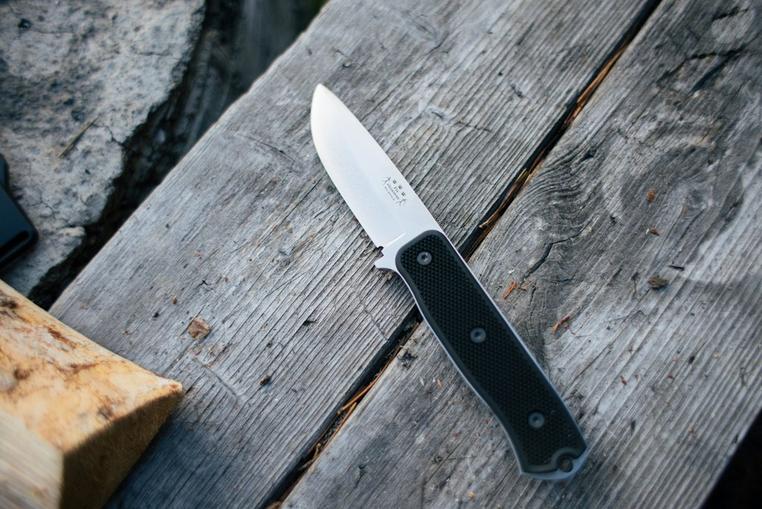

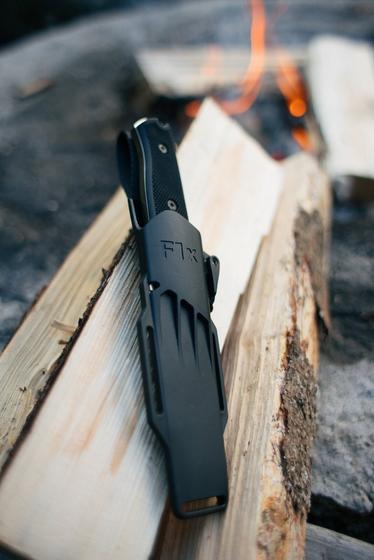
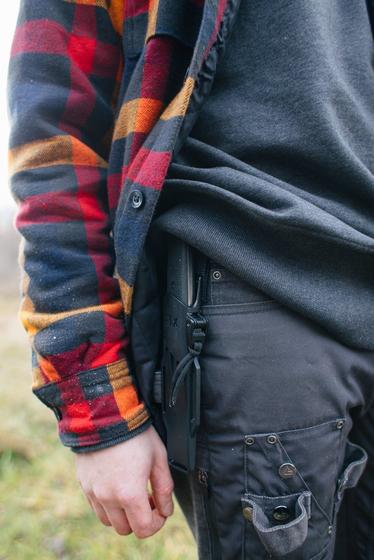
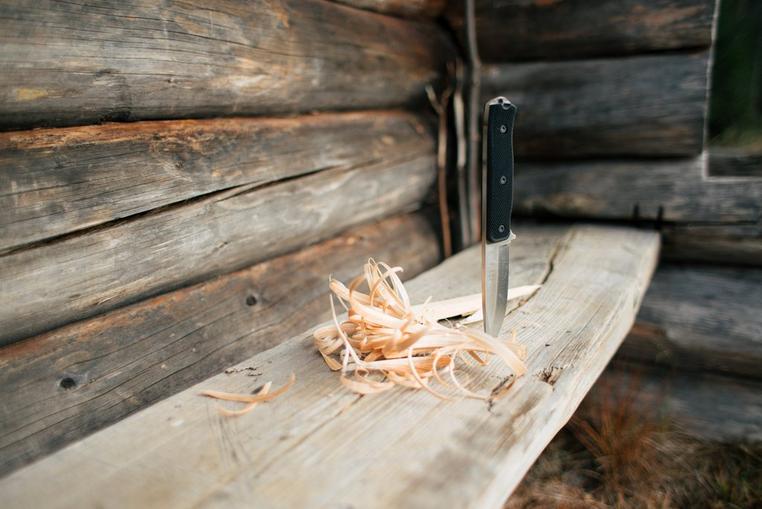
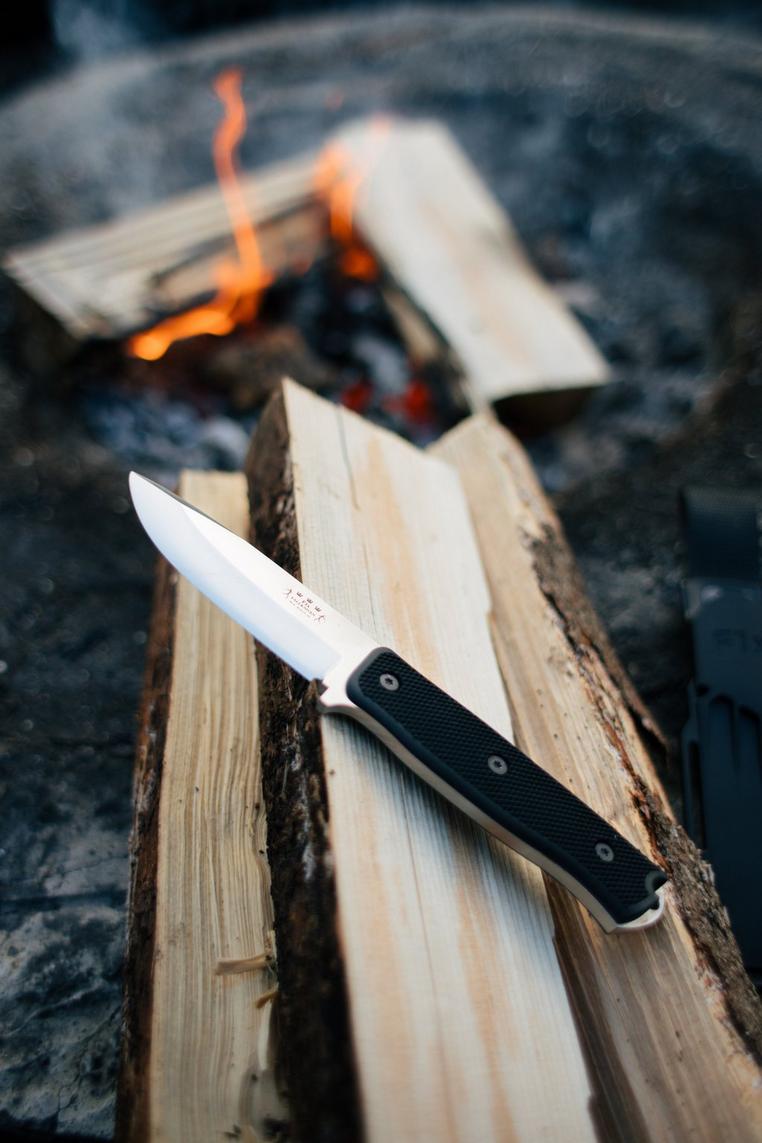
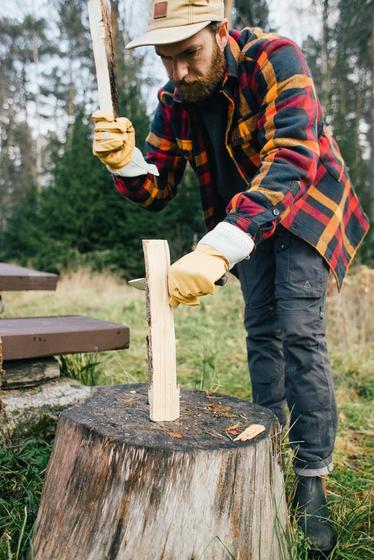

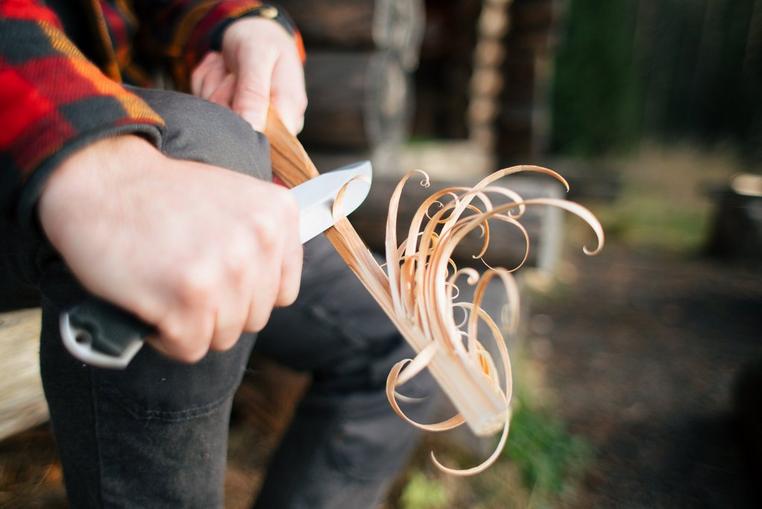

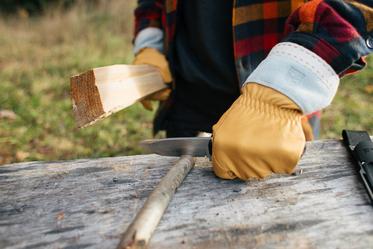
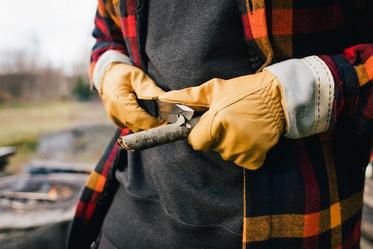

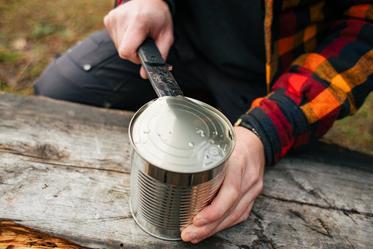
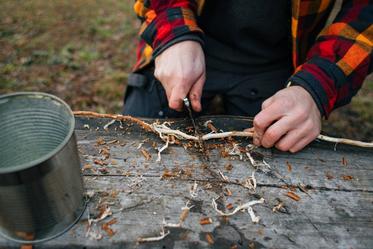

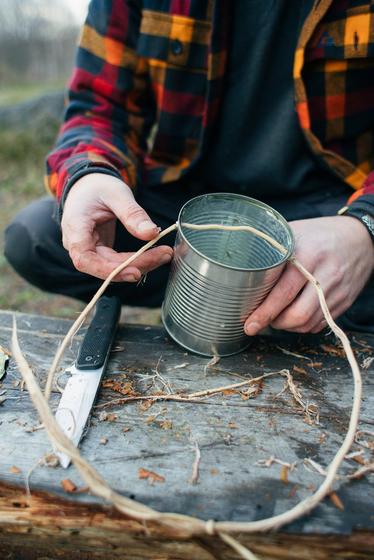
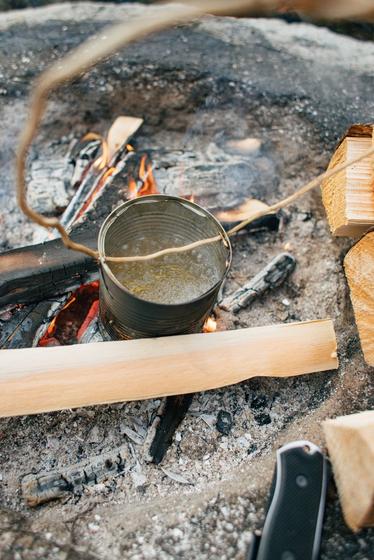




?%24center=center&%24poi=poi&%24product-image%24=&fmt=auto&h=500&poi=%7B%24this.metadata.pointOfInterest.x%7D%2C%7B%24this.metadata.pointOfInterest.y%7D%2C%7B%24this.metadata.pointOfInterest.w%7D%2C%7B%24this.metadata.pointOfInterest.h%7D&scaleFit=%7B%28%24this.metadata.pointOfInterest%29%3F%24poi%3A%24center%7D&sm=c&w=1208)





?%24center=center&%24poi=poi&%24product-image%24=&fmt=auto&h=500&poi=%7B%24this.metadata.pointOfInterest.x%7D%2C%7B%24this.metadata.pointOfInterest.y%7D%2C%7B%24this.metadata.pointOfInterest.w%7D%2C%7B%24this.metadata.pointOfInterest.h%7D&scaleFit=%7B%28%24this.metadata.pointOfInterest%29%3F%24poi%3A%24center%7D&sm=c&w=1208)
